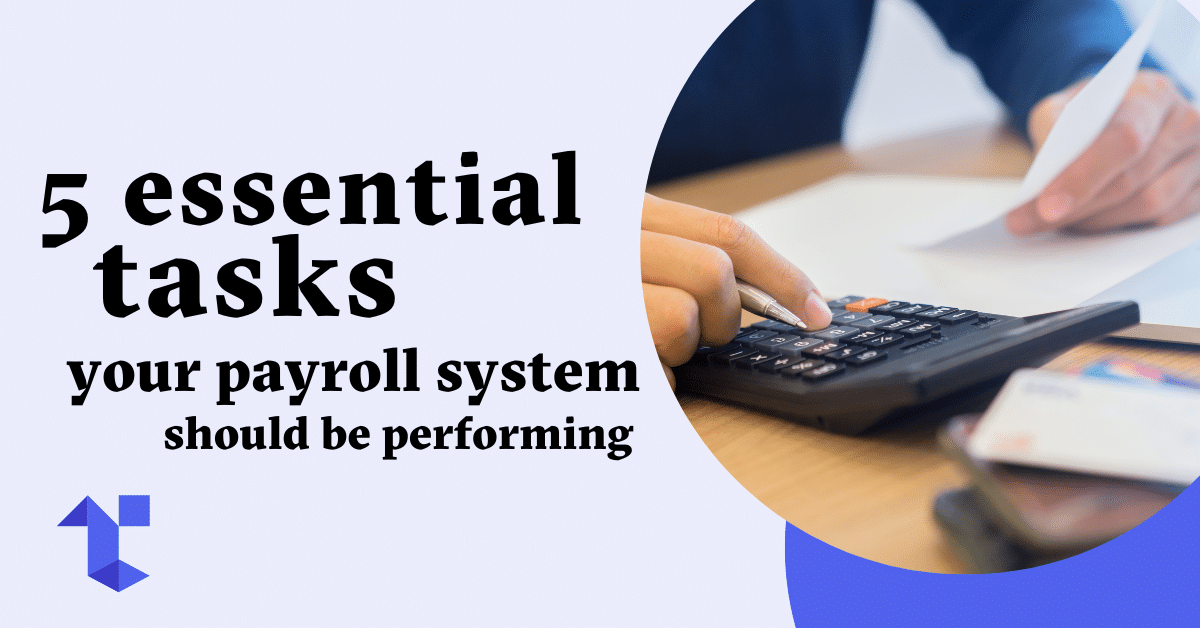5 Essential Tasks Your Payroll System Should Perform for Effective Management
June 15, 2023
Managing payroll efficiently is crucial for any business, regardless of its size or industry. A well-functioning payroll system not only ensures accurate and timely payment of employees but also helps maintain compliance with legal and tax obligations. In today’s digital age, businesses have access to advanced payroll systems that can streamline and automate various tasks. In this article, we will explore five essential tasks that your payroll system should perform to achieve effective management.
Key Takeaways:
- A payroll system should accurately calculate and process employee payroll, considering factors like hours worked, overtime, bonuses, deductions, and taxes.
- The payroll system should handle tax calculations accurately, withhold the correct amount of taxes, and generate tax forms to ensure compliance with federal, state, and local tax regulations. It should also stay updated with changing tax laws.
- An effective payroll system should provide employee self-service functionality, allowing employees to access pay information, update personal details, and request time off.
- A payroll system should offer comprehensive reporting and analytics capabilities, providing insights into employee costs, labor expenses, tax liabilities, and other relevant metrics.
- Seamless integration with accounting and HR systems eliminates duplicate data entry, ensures data consistency, simplifies financial reconciliation, and facilitates efficient transfer of employee information.
1. Accurate Calculation and Processing of Payroll:
One of the primary responsibilities of a payroll system is to accurately calculate and process employee payroll. It should take into account various factors such as hours worked, overtime, bonuses, deductions, and taxes. The system should be able to handle complex calculations efficiently and generate error-free pay stubs for employees.
Moreover, an effective payroll system should provide flexibility in defining pay structures and allow for customization based on specific business requirements. This includes supporting different payment frequencies, such as weekly, bi-weekly, or monthly, and accommodating various compensation models like hourly wages, salaries, or commissions.
2. Tax Management and Compliance:
Tax compliance is a critical aspect of payroll management. Your payroll system should be equipped to handle tax calculations accurately, considering federal, state, and local tax regulations. It should automatically withhold the correct amount of taxes from employee wages and generate tax forms, such as W-2s or 1099s, as required by law.
Furthermore, the system should stay updated with changing tax laws and automatically adjust the calculations and withholdings accordingly. This ensures that your business remains compliant with tax regulations, avoiding penalties or legal complications.
3. Employee Self-Service and Timekeeping Integration:
An effective payroll system should provide employee self-service functionality, enabling employees to access their pay information and make necessary updates independently. This empowers employees to view their pay stubs, download tax documents, update personal information, and request time off or vacation days, reducing the administrative burden on HR personnel.
Integrating the payroll system with a timekeeping solution can further streamline the payroll process. Timekeeping data can be automatically synced with the payroll system, eliminating manual data entry and reducing errors. This integration ensures accurate recording of employee work hours, simplifies the calculation of overtime, and enhances overall payroll accuracy.
4. Reporting and Analytics:
Payroll data holds valuable insights that can help businesses make informed decisions and optimize their operations. Your payroll system should offer comprehensive reporting and analytics capabilities to generate detailed reports on employee costs, labor expenses, tax liabilities, and other relevant metrics. These reports can provide visibility into your organization’s payroll trends, identify cost-saving opportunities, track labor costs against budgets, and support strategic workforce planning. Additionally, the ability to generate customized reports based on specific parameters allows businesses to gain actionable insights and make data-driven decisions.
5. Integration with Accounting and HR Systems:
For efficient management, your payroll system should seamlessly integrate with other critical systems like accounting and human resources (HR). Integration eliminates the need for duplicate data entry and ensures data consistency across systems.
Integration with the accounting system enables automatic posting of payroll transactions, simplifying financial reconciliation processes and reducing the chance of errors. Moreover, it provides a holistic view of the organization’s financial health by combining payroll data with other financial metrics.
Similarly, integration with HR systems allows for efficient transfer of employee information, such as new hires, terminations, or changes in employee status. This ensures accurate and up-to-date employee records across the organization and reduces administrative overhead.
A well-designed payroll system performs a range of essential tasks to ensure effective management of payroll processes. From accurate calculation and processing of payroll to tax management and compliance, employee self-service, reporting and analytics, and seamless integration with other systems, these functions streamline operations, improve efficiency, and reduce the risk of errors and non-compliance. Investing in a robust and comprehensive payroll system not only saves time and effort but also contributes to employee satisfaction by ensuring timely and accurate pay. As businesses grow and adapt to evolving payroll regulations, leveraging a modern payroll system becomes increasingly important to stay compliant and optimize payroll management for sustainable success.
share this blog
STAY CONNECTED
Sign up for our newsletter for the latest Tesseon information.
Related Blogs
What our clients are saying about us
Disclaimer: The information provided on this blog page is for general informational purposes only and should not be considered as legal advice. It is advisable to seek professional legal counsel before taking any action based on the content of this page. We do not guarantee the accuracy or completeness of the information provided, and we will not be liable for any losses or damages arising from its use. Any reliance on the information provided is solely at your own risk. Consult a qualified attorney for personalized legal advice.

